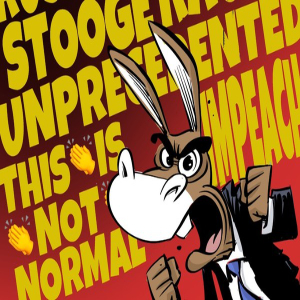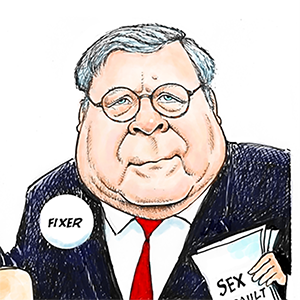Politics
/ArcaMax

Why the fight over abortion in Kansas and Missouri isn't going away anytime soon
Kansas and Missouri voters have spoken on abortion.
But nearly three years after the U.S. Supreme Court struck down the federal right to the procedure, sending the issue back to the states, abortion continues to dominate politics on both sides of the state line.
And it’s now clear that the situation will continue for at least two more years,...Read more

LA braces for multiple 'No Kings' demonstrations across the city Saturday
LOS ANGELES — Los Angeles and other major cities across the nation are girding for widespread demonstrations against the Trump administration Saturday as the federal government expands its aggressive immigration enforcement crackdown beyond Southern California.
In Washington, the Army will celebrate 250 years of service, as well as President ...Read more

Joan Baez to join Bay Area 'No Kings' protests against Trump
SAN JOSE, Calif. — Iconic folk singer, political activist and long time Bay Area resident Joan Baez is coming full circle Saturday, set to speak and possibly sing at a “No Kings” protest against President Donald Trump in Palo Alto, the city where she engaged in her first act of civil disobedience at age 17.
Baez, 83, has come a long way ...Read more

Nation braces for a weekend of widespread 'No Kings' immigration protests
LOS ANGELES — Los Angeles and other major cities across the nation are girding for widespread demonstrations against the Trump administration Saturday as the federal government expands its aggressive immigration enforcement crackdown beyond Southern California.
In Washington D.C., the U.S. Army will celebrate 250 years of service, as well as ...Read more

Trump backs Israel after sweeping attack on Iran
President Donald Trump backed Israel on Friday after it launched a sweeping attack on Iran’s nuclear program and leadership, although officials stressed the U.S. was not directly involved in the dramatic escalation that could lead to a wider war in the Middle East.
Trump claimed the Israeli attack was launched after Tehran ignored a 60-day ...Read more

NYPD braces for NYC anti-Trump 'No Kings Day' mass protests on Saturday
NEW YORK — Scores of city cops are expected to be out on the streets Saturday to monitor and police the thousands of demonstrators attending Saturday’s anti-Trump “No Kings Day” events, Mayor Eric Adams and Police Commissioner Jessica Tisch said, giving protesters fair warning that if they break the law, they will be arrested.
“New ...Read more

Michael Douglas slams Trump for creating 'drama,' 'chaos' in the world
SAN JOSE, Calif. — Michael Douglas is the latest Hollywood celebrity to denounce Donald Trump for deploying the National Guard and Marines to enforce immigration raids in Los Angeles, with the Oscar-winning actor saying the president has “created such drama” and is responsible for stoking conflict throughout the world.
Speaking on stage ...Read more

Anti-Trump 'No Kings Day' protests planned across Minnesota
MINNEAPOLIS — Dozens of protests are planned Saturday across Minnesota, part of a nationwide demonstration against the Trump administration.
The so-called “No Kings Day” demonstrations coincide with President Donald Trump’s planned military parade for the Army’s 250th anniversary, which also falls on the president’s birthday and ...Read more

Analysis: 'Israel is in charge'-- Netanyahu made sure Trump's Iran diplomacy was no picnic
WASHINGTON — As Donald Trump hobnobbed with lawmakers at the White House congressional picnic Thursday evening, Israel’s military was striking targets inside Iran just hours after the U.S. president had signaled that he preferred giving diplomatic talks another chance.
The scenes on the South Lawn, and then back inside the West Wing, ...Read more

With 'No Kings' protests upcoming, has South Carolina's approval of Trump shifted at all?
COLUMBIA, S.C. — Large numbers of protesters are expected to descend on the South Carolina State House this Saturday for a planned protest against President Donald Trump. And who shows up may tell us something about where the administration is headed.
Saturday’s planned demonstration at the State House is one of several “No Kings” ...Read more

Los Angeles braces for weekend of 'No Kings' protests
LOS ANGELES — Los Angeles and other major cities across the nation are girding for widespread demonstrations against the Trump administration Saturday as the federal government expands its aggressive immigration enforcement crackdown beyond Southern California.
The D.C. military event will celebrate the U.S. Army’s 250th birthday, as well ...Read more

Trump backs Israel after sweeping attack on Iran
President Donald Trump backed Israel on Friday after it launched a sweeping attack on Iran’s nuclear program and leadership, although officials stressed the U.S. was not directly involved in the dramatic escalation that could lead to a wider war in the Middle East.
Trump claimed the Israeli attack was launched after Tehran ignored a 60-day ...Read more

'No Kings' rally against Trump in Sacramento expected to draw thousands to Capitol grounds Saturday
SACRAMENTO, Calif. – Protesters are set to rally at the state Capitol and around the Sacramento area on Saturday as part of nationwide demonstrations against the Trump administration under the slogan “No Kings.”
The protests — which organizers have billed as the largest public mobilization yet against what they deem President Donald ...Read more

Trump urges Iran to make a nuclear deal to avoid more attacks
U.S. President Donald Trump urged Iran to accept a nuclear deal to avoid further attacks, hours after Israel bombed the Islamic Republic’s atomic facilities and killed some of its top commanders.
“There is still time to make this slaughter, with the next already planned attacks being even more brutal, come to an end,” Trump said on Truth ...Read more

Every shooting reflects our culture of violence, which the president cheers
On May 21, as they left the Capital Jewish Museum in Washington, Yaron Lischinsky and Sarah Milgrim were fatally shot, and because they were employees of the Israeli Embassy and the suspect was associated with pro-Palestinian politics, the story was reported in the familiar mode of Middle East politics.
The questions that reporters and pundits ...Read more

High court not as divided as liberal critics might think
Conventional wisdom among leftist activists is that the U.S. Supreme Court has become hopelessly dominated by conservative ideologues more interested in right-wing “judicial activism” than in following the law. But this is a woefully inaccurate portrayal steeped in partisan rancor over President Donald Trump and his appointments to the court...Read more

Looking for government waste? Check DC this Saturday
It is altogether fitting that the nation should honor the 250th anniversary of the United States Army on June 14, 2025. That’s a judgment that was shared by the Biden administration, under which planning for the recognition of the Army began.
The United States could not survive without men and women willing to give and risk that last full ...Read more

Trump halts efforts to tear out lower Snake River dams in Washington and Idaho
President Trump signed a memo intended to save the lower Snake River dams in Eastern Washington on Thursday, reversing Biden administration actions that helped support efforts to remove the hydroelectric dams.
Trump said in a memo that his administration was “committed to protecting the American people from radical green agenda policies that ...Read more

Trump mulls using defense powers to fund rare-Earth projects
WASHINGTON — The Trump administration is developing a plan to use Cold War-era powers to prioritize and fund rare earth projects it deems critical to national security, people familiar with the matter said.
Officials are discussing using the Defense Production Act to tap financing, loans and other means for rare earths element-related ...Read more

Trump wants to make it more expensive to sue over his policies
WASHINGTON — President Donald Trump and his allies are pursuing an alternative strategy to defend against mounting court orders blocking his policies: Raise the financial stakes for those suing the administration.
House Republicans want to force people suing the U.S. to post financial guarantees to cover the government’s costs if they win a...Read more
Popular Stories
- Trump wants to make it more expensive to sue over his policies
- Every shooting reflects our culture of violence, which the president cheers
- Looking for government waste? Check DC this Saturday
- Trump urges Iran to make a nuclear deal to avoid more attacks
- Why I'm going to a 'No Kings' rally against Trump, and you should too























































